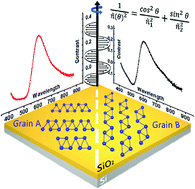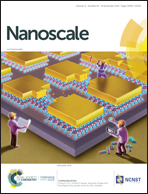In-plane optical anisotropy in ReS2 flakes determined by angle-resolved polarized optical contrast spectroscopy†
Abstract
Various in-plane anisotropic properties are observed for the layered semiconducting transition metal dichalcogenide (TMD), rhenium disulfide (ReS2) due to its reduced symmetry. The understanding of these unique anisotropic behaviors in ReS2 will promote its applications in optoelectronics. In this work, angle-resolved polarized optical contrast spectroscopy has proved to be an efficient, quantitative, and non-destructive method to probe the optical anisotropy in ReS2 flakes with different thicknesses. The contrast value of ReS2 displays the maximum intensity when the polarization of incident light is along the Re–Re chain direction, while the contrast shows the minimum value when the polarization is perpendicular. An empirical equation for in-plane anisotropic refractive index calculation has been proposed and the angle-resolved polarized optical contrasts of 1–3-layer ReS2 are calculated. The calculation results show good agreements with the experimental observations. This indicates that the proposed equation is indeed appropriate for the quantitative understanding of birefringence and dichroism in ReS2 flakes. Our results not only shed light on the identification of crystal axes in anisotropic materials by using angle-resolved polarized contrast spectroscopy, but also provide quantitative information about anisotropy in anisotropic materials such as ReS2.



 Please wait while we load your content...
Please wait while we load your content...